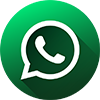 Book Appointment
Book Appointment

Cerebral palsy, a neurological condition, happens either due to brain damage during fetal development or because of another developmental disability that impacts the brain’s growth. It leads to a movement disorder or problems related to muscle tone and posture. It also disrupts control of muscle movement and may sometimes affect the neighbouring areas of the brain and the abilities under their control.
In most cases, signs of cerebral palsy manifest during early childhood. Cerebral palsy does not automatically lead to intellectual disability.
The three main cerebral palsy types include:
Spastic: Where muscle tightness and spasms are seen
Dyskinetic: Causes issues with muscle control
Mixed: Has both the characteristics of spastic and dyskinetic types
The symptoms of cerebral palsy are not the same in all cases. While some are related to movement disorders, others are related to appearance, behaviour, and the effects on body parts.
Some examples:
Movement
Eating and Speech
Development
If you notice a movement disorder or delayed development in your child, it is advisable to visit an experienced paediatric orthopaedic specialist to get an accurate diagnosis.
At Maruti Clinic for Children Orthopaedics, we will carefully evaluate your child’s signs and symptoms, monitor the growth and development, conduct a review of your child’s medical history and then do a meticulous clinical examination.
We may order a few essential tests to identify the areas of damage or abnormal developments in the brain, which include MRI or Cranial ultrasound and blood and urine tests to screen for genetic issues. We will recommend tests to evaluate the child’s hearing, vision, or speech as they may be affected. We will also get the required X-rays to assess the associated deformity, gait, and bony abnormalities. Few patients may also require a specialised instrumented gait analysis.
Our team will conduct special treatment sessions where we guide parents on how to handle and interact with their children to improve their daily living.
Through appropriate orthopaedic treatment, we aim to correct the alignment in the legs, feet, ankles, hips, wrists, and arms to give your child the best possible chance of living independently and moving around with or without support. As part of orthopaedic treatment, we use physiotherapy, advanced orthotic devices, and corrective casting with or without Inj Botox, as well as surgery of muscles, tendons, and/or bones as and when needed.
We combine our experience, clinical expertise, and compassionate care to ensure the best possible outcome for your child through the most appropriate treatment.
